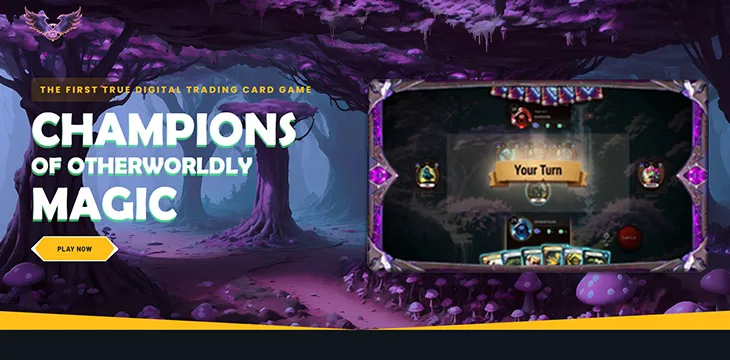|
Getting your Trinity Audio player ready...
|
Champions TCG (formerly CoOM Battles) has released its second generation collection of 1 million cards on the BSV blockchain. The second-gen monsters consist of 149 new Champions with new elements and abilities. This million card mint eclipses Bitmap as the largest NFT collection atop any blockchain and, combined with nearly free fees, creates interesting market dynamics not seen before with digital currency.
On BTC, the minimum listing price for token exchange is around 20,000 satoshis or $5. Transaction fees may be from $0.50 to $1 when fee rates are “reasonable.” This means that without platforms enforcing minimum listing prices, tokens on BTC could trade for $1 or 4,000 satoshis at the lowest where the exchange makes economic sense. On the BSV blockchain, this issue is non-existent with 1 satoshi fee. Therefore, assets, particularly Champions cards, in this case, can have true price discovery.

While the above image reads $0.00, likely the exchange happened for less than a penny of BSV or less than 30,000 satoshis.
Unlike most NFT collections, the trading cards are usable in an online game where users can engage in ranked matches and tournaments to earn rewards, thus having utility. If the game is successful and continues to have player demand, the cards will continue to sell. Compared to the physical trading card market, which incurs shipping and lead-time costs, the theoretical floor is at least a few dollars for a single transaction. Upon purchasing a digital card, the card is immediately in the buyer’s wallet and can be used in the game, sent to another user, or listed for sale.
Sub-penny pricing, near-zero fees, and instant delivery allow for more volume that is impossible in traditional markets and other blockchains. Consider that most people will not pick up a penny off the ground, yet you may be able to buy a few Champions TCG NFTs with the equivalent value in BSV. This market has the potential for decoupled value creation in the BSV blockchain, where money can be spent that otherwise would not have. Furthermore, the beneficiaries of these trades are the players, the marketplace, the collection creator, and the miners. Even if the value exchanged is small, each trade completed still results in revenue and value add for all parties involved.
For example, buyers may purchase simply because the cards are so cheap. Perhaps they like the art on the card, want to play the game, or just want to speculate. Buyers could speculate on a card selling for 1/3 of a cent, rising to 1 cent, earning a 3x return. This opportunity is just not possible elsewhere.
Cool that we are not using NFTs for scarcity but rather for creating a dynamic market of players trading with each other, setting real world market values.
Exciting times ahead! https://t.co/3pDM8jDB3X
— Alex Agut (@apagut) September 25, 2023
Something like this model is likely what Satoshi Nakamoto envisioned in describing the issues of transacting on the Internet and what his creation, Bitcoin, was supposed to solve. Champions TCG’s large number of cards and innate utility demonstrate an initial market where these low-value trades make sense, but imagine if multiple games or collections took advantage of this same model and the amount of value that can be created.
Watch CoinGeek Weekly Livestream: The new trading card game that is powered by Bitcoin

 07-13-2025
07-13-2025 





